What is the
I-WISh
Survey?
Although immune thrombocytopenia (ITP) is a rare condition, it affects hundreds of thousands of people throughout the world—often in ways that are not fully understood or appreciated. To help shine a light on the challenges and goals of people living with ITP, Novartis created the I-WISh Survey, a large-scale study:


Completed by 1507
people with ITP

472 doctors
who treat ITP

Across 13 countries
You should know that, when it comes to how ITP affects you and your life, you are not alone. There are people with similar experiences all over the world. You may find this information useful when talking to your doctor about the treatment options that can best improve your condition and your daily life.
See how ITP
affects people
throughout
the world
The results below represent all of the people who completed the I-WISh survey globally. However, you can also see the results from each country that participated. Select your country to learn about the impact of ITP near you.
- Canada
- China
- Colombia
- Egypt
- France
- Germany
- India
- Italy
- Japan
- Spain
- Turkey
- United Kingdom
- United States
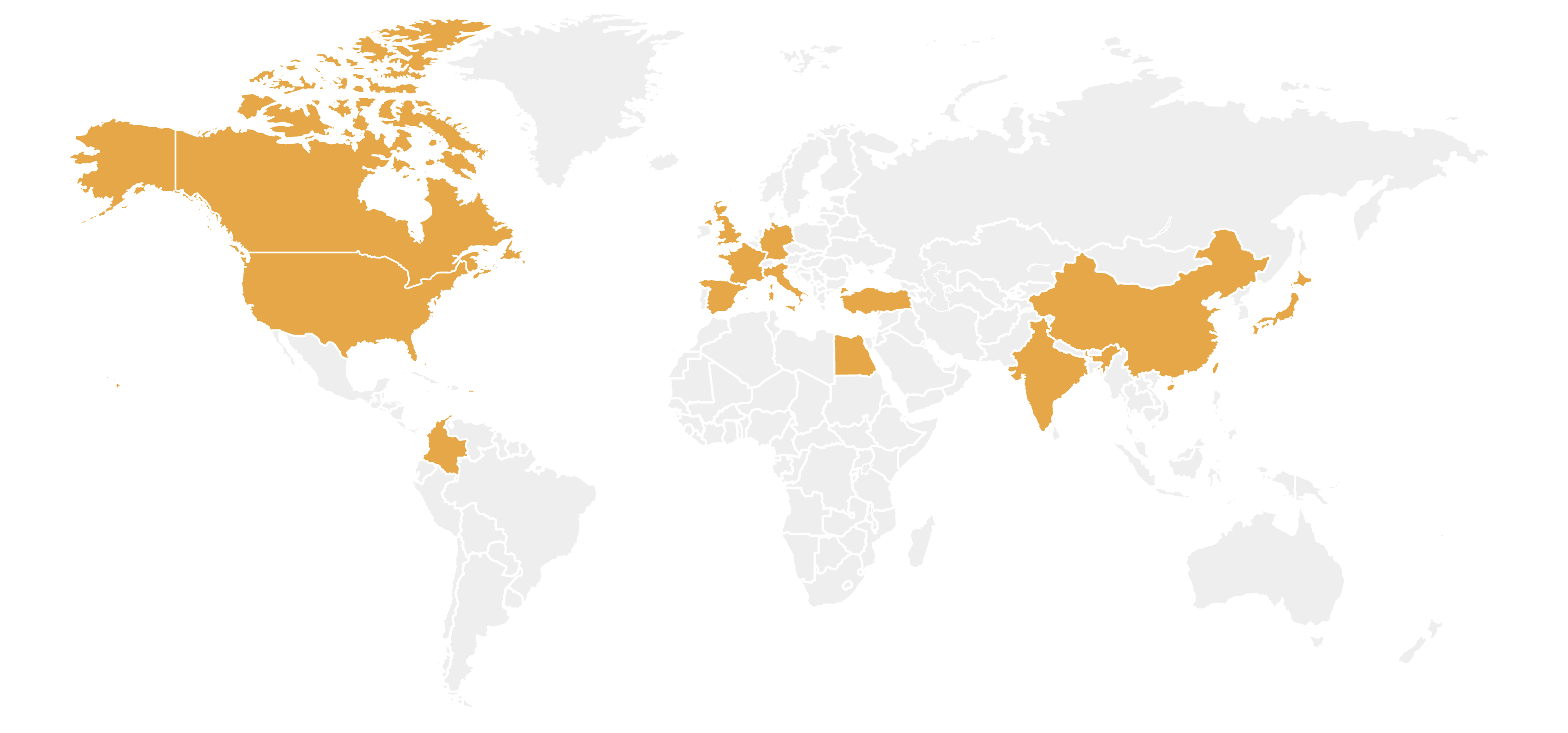
Global: I-WISh Results
time of the survey
 What people with ITP said…
What people with ITP said…
-
 of 10 experience fatigue
of 10 experience fatigue
-
 of 10 experience anxiety about their
platelet count being unstable
of 10 experience anxiety about their
platelet count being unstable
-
 of 10 experience petechiae (tiny
red/purple dots on the skin)
of 10 experience petechiae (tiny
red/purple dots on the skin)
 What doctors said…
What doctors said…
-
 of 10 said their patients experience
petechiae (tiny red/purple dots on the
skin)
of 10 said their patients experience
petechiae (tiny red/purple dots on the
skin)
-
 of 10 said their patients experience
purpura (bruising caused by bleeding
from small blood vessels under the skin)
of 10 said their patients experience
purpura (bruising caused by bleeding
from small blood vessels under the skin)
-
 of 10 said their patients experience
nosebleeds and gum bleeding
of 10 said their patients experience
nosebleeds and gum bleeding
 The symptoms people with ITP most want to go away
The symptoms people with ITP most want to go away
-
 of 10 said fatigue
of 10 said fatigue
-
 of 10 said anxiety about their platelet count being unstable
of 10 said anxiety about their platelet count being unstable
-
 of 10 said bruising for no known reason
of 10 said bruising for no known reason
daily life
-
 of 10 said their energy levels
of 10 said their energy levels
-
 of 10 said their ability to exercise
of 10 said their ability to exercise
-
 of 10 said their work life or their studies
of 10 said their work life or their studies
- #1: I worry that my platelet count fluctuates for no apparent reason
- #2: I worry that my condition will get worse
- #3: I worry about my disease
 What people with ITP said their goals are…
What people with ITP said their goals are…
-
 of 10 said healthy blood counts
of 10 said healthy blood counts
-
 of 10 said preventing their ITP from
becoming worse
of 10 said preventing their ITP from
becoming worse
-
 of 10 said increasing their energy
levels
of 10 said increasing their energy
levels
 What doctors said their goals are…
What doctors said their goals are…
-
 of 10 said reducing spontaneous
bleeds
of 10 said reducing spontaneous
bleeds
-
 of 10 said a better quality of life
of 10 said a better quality of life
-
 of 10 said healthy blood counts
of 10 said healthy blood counts
 What people with ITP said…
What people with ITP said…
-
 of 10 said they prefer oral once-daily
pill
of 10 said they prefer oral once-daily
pill
 What doctors said…
What doctors said…
-
 of 10 said they prefer oral once-daily
pill
of 10 said they prefer oral once-daily
pill
- Keep side effects to a minimum: 86
- Reduce bleeding: 87
- People taking TPO-RAs were twice as likely to recommend this treatment to another person with ITP, compared with people taking a monoclonal antibody or corticosteroids*
- Approximately 15% to 20% more people experience fatigue as a side effect of treatment† with corticosteroids or a monoclonal antibody, compared to treatment with TPO-RAs
-
 of 10 required regular immunizations
of 10 required regular immunizations
-
 of 10 experienced more infections
of 10 experienced more infections
-
 of 10 experienced none of these consequences
of 10 experienced none of these consequences
*These results are based on the number of patients who said they strongly agree with the statement that they would recommend the treatment to another person with ITP.
†Among patients reporting a high or very high symptom burden.
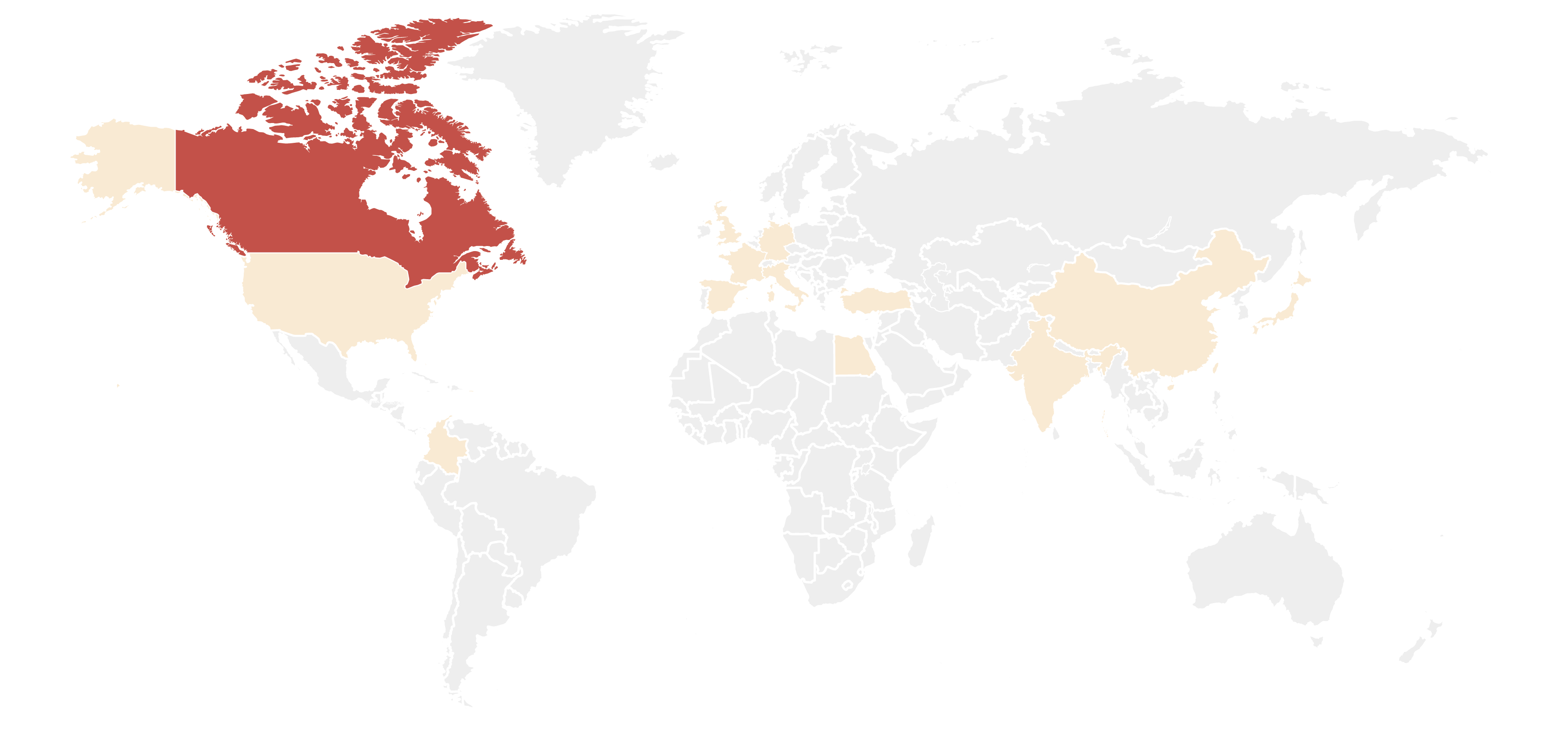
Canada: I-WISh Survey Results
time of the survey
 What people with ITP said…
What people with ITP said…
-
 of 10 experience fatigue
of 10 experience fatigue
-
 of 10 experience anxiety about their
platelet count being unstable
of 10 experience anxiety about their
platelet count being unstable
-
 of 10 experience petechiae (tiny
red/purple dots on the skin)
of 10 experience petechiae (tiny
red/purple dots on the skin)
 What doctors said…
What doctors said…
-
 of 10 said their patients experience
petechiae (tiny red/purple dots on the
skin)
of 10 said their patients experience
petechiae (tiny red/purple dots on the
skin)
-
 of 10 said their patients experience
nosebleeds
of 10 said their patients experience
nosebleeds
-
 of 10 said their patients experience
gum bleeding
of 10 said their patients experience
gum bleeding
 The symptoms people with ITP most want to go away
The symptoms people with ITP most want to go away
-
 of 10 said fatigue
of 10 said fatigue
-
 of 10 said anxiety about their platelet count being unstable
of 10 said anxiety about their platelet count being unstable
-
 of 10 said bruising for no known reason
of 10 said bruising for no known reason
daily life
-
 of 10 said their energy levels
of 10 said their energy levels
-
 of 10 said their ability to exercise
of 10 said their ability to exercise
-
 of 10 said their work life or their studies
of 10 said their work life or their studies
- #1: I worry that my condition will get worse
- #2: I worry that my platelet count fluctuates for no apparent reason
- #3: I worry about my disease
 What people with ITP said their goals are…
What people with ITP said their goals are…
-
 of 10 said healthy blood counts
of 10 said healthy blood counts
-
 of 10 said increasing their energy
levels
of 10 said increasing their energy
levels
-
 of 10 said preventing their ITP from
becoming worse
of 10 said preventing their ITP from
becoming worse
 What doctors said their goals are…
What doctors said their goals are…
-
 of 10 said reducing spontaneous
bleeds
of 10 said reducing spontaneous
bleeds
-
 of 10 said a better quality of life
of 10 said a better quality of life
-
 of 10 said healthy blood counts
of 10 said healthy blood counts
 What people with ITP said…
What people with ITP said…
-
 of 10 said they prefer an oral once-daily
pill
of 10 said they prefer an oral once-daily
pill
 What doctors said…
What doctors said…
-
 of 10 said they prefer an oral
once-daily pill
of 10 said they prefer an oral
once-daily pill
- Keep side effects to a minimum: 90
- Reduce bleeding: 89
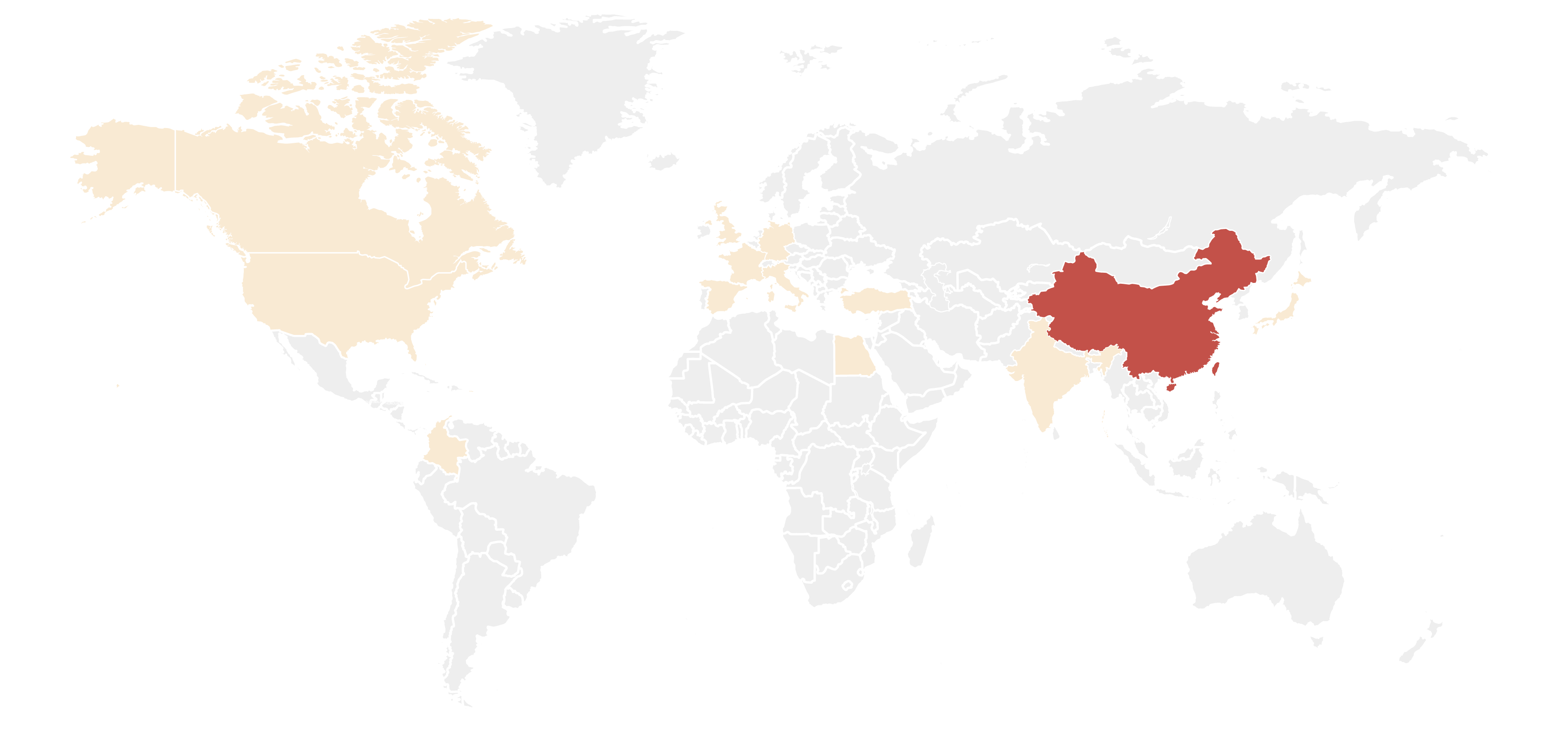
China: I-WISh Survey Results
time of the survey
 What people with ITP said…
What people with ITP said…
-
 of 10 experience fatigue
of 10 experience fatigue
-
 of 10 experience bruising for no
known reason
of 10 experience bruising for no
known reason
-
 of 10 experience anxiety about their
platelet count being unstable
of 10 experience anxiety about their
platelet count being unstable
 What doctors said…
What doctors said…
-
 of 10 said their patients experience
purpura (bruising caused by bleeding
from small blood vessels under the skin)
of 10 said their patients experience
purpura (bruising caused by bleeding
from small blood vessels under the skin)
-
 of 10 said their patients experience
petechiae (tiny red/purple dots on the
skin)
of 10 said their patients experience
petechiae (tiny red/purple dots on the
skin)
-
 of 10 said their patients experience
gum bleeding
of 10 said their patients experience
gum bleeding
 The symptoms people with ITP most want to go away
The symptoms people with ITP most want to go away
-
 of 10 said bruising for no known reason
of 10 said bruising for no known reason
-
 of 10 said fatigue
of 10 said fatigue
-
 of 10 said anxiety about their platelet count being unstable
of 10 said anxiety about their platelet count being unstable
-
 of 10 said petechiae (tiny red/purple dots on the skin)
of 10 said petechiae (tiny red/purple dots on the skin)
daily life
-
 of 10 said their energy levels
of 10 said their energy levels
-
 of 10 said their ability to exercise
of 10 said their ability to exercise
-
 of 10 said their work life or their studies
of 10 said their work life or their studies
- #1: I worry that my platelet count fluctuates for no apparent reason
- #2: I worry about my disease
- #3: I worry about dying
 What people with ITP said their goals are…
What people with ITP said their goals are…
-
 of 10 said reducing my spontaneous
bruising/bleeding
of 10 said reducing my spontaneous
bruising/bleeding
-
 of 10 said healthy blood counts
of 10 said healthy blood counts
-
 of 10 said improving my quality of
life
of 10 said improving my quality of
life
 What doctors said their goals are…
What doctors said their goals are…
-
 of 10 said reducing spontaneous
bleeds
of 10 said reducing spontaneous
bleeds
-
 of 10 said a better quality of life
of 10 said a better quality of life
-
 of 10 said healthy blood counts
of 10 said healthy blood counts
 What people with ITP said…
What people with ITP said…
-
 of 10 said they prefer an oral once-daily
pill
of 10 said they prefer an oral once-daily
pill
 What doctors said…
What doctors said…
-
 of 10 said they prefer an oral
once-daily pill
of 10 said they prefer an oral
once-daily pill
- Keep side effects to a minimum: 87
- Reduce bleeding: 88
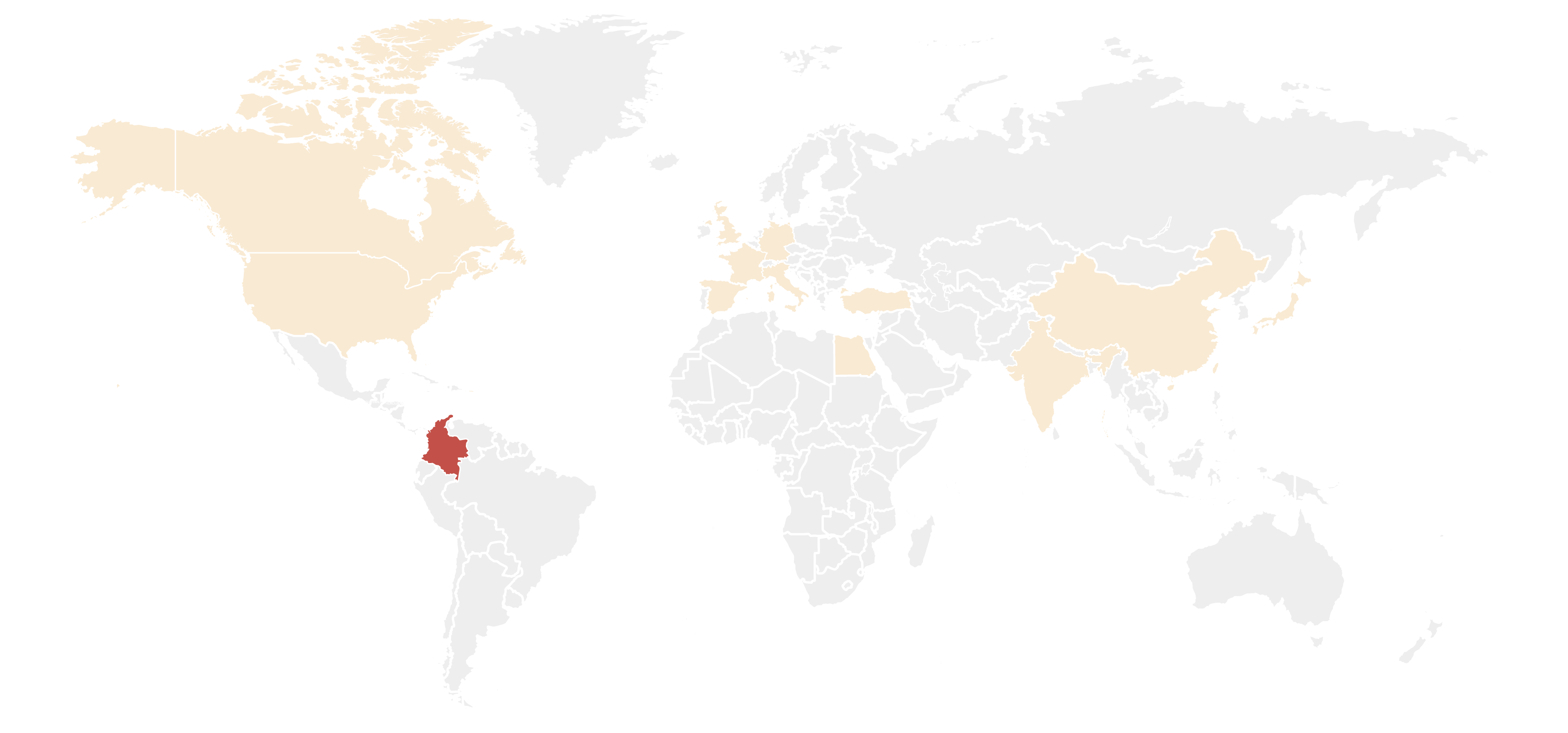
Colombia: I-WISh Survey Results
time of the survey
 What people with ITP said…
What people with ITP said…
-
 of 10 experience fatigue
of 10 experience fatigue
-
 of 10 experience bruising for no
known reason
of 10 experience bruising for no
known reason
-
 of 10 experience petechiae (tiny
red/purple dots on the skin)
of 10 experience petechiae (tiny
red/purple dots on the skin)
 What doctors said…
What doctors said…
-
 of 10 said their patients
experience petechiae (tiny red/purple
dots on the skin)
of 10 said their patients
experience petechiae (tiny red/purple
dots on the skin)
-
 of 10 said their patients experience
nosebleeds
of 10 said their patients experience
nosebleeds
-
 of 10 said their patients experience
gum bleeding
of 10 said their patients experience
gum bleeding
 The symptoms people with ITP most want to go away
The symptoms people with ITP most want to go away
-
 of 10 said fatigue
of 10 said fatigue
-
 of 10 said anxiety about their platelet count being unstable
of 10 said anxiety about their platelet count being unstable
-
 of 10 said petechiae (tiny red/purple dots on the skin)
of 10 said petechiae (tiny red/purple dots on the skin)
daily life
-
 of 10 said their energy levels
of 10 said their energy levels
-
 of 10 said their work life or their studies
of 10 said their work life or their studies
-
 of 10 said their ability to exercise
of 10 said their ability to exercise
- #1: I worry that my platelet count fluctuates for no apparent reason
- #2: I worry about dying
- #3: I worry that my condition will get worse
 What people with ITP said their goals are…
What people with ITP said their goals are…
-
 of 10 said improving my quality of
life
of 10 said improving my quality of
life
-
 of 10 said healthy blood counts
of 10 said healthy blood counts
-
 of 10 said reducing my spontaneous
bruising/bleeding
of 10 said reducing my spontaneous
bruising/bleeding
 What doctors said their goals are…
What doctors said their goals are…
-
 of 10 said healthy blood counts
of 10 said healthy blood counts
-
 of 10 said a better quality of life
of 10 said a better quality of life
-
 of 10 said reducing spontaneous
bleeds
of 10 said reducing spontaneous
bleeds
 What people with ITP said…
What people with ITP said…
-
 of 10 said they prefer an oral once-daily
pill
of 10 said they prefer an oral once-daily
pill
 What doctors said…
What doctors said…
-
 of 10 said they prefer an oral
once-daily pill
of 10 said they prefer an oral
once-daily pill
- Keep side effects to a minimum: 90
- Reduce bleeding: 90
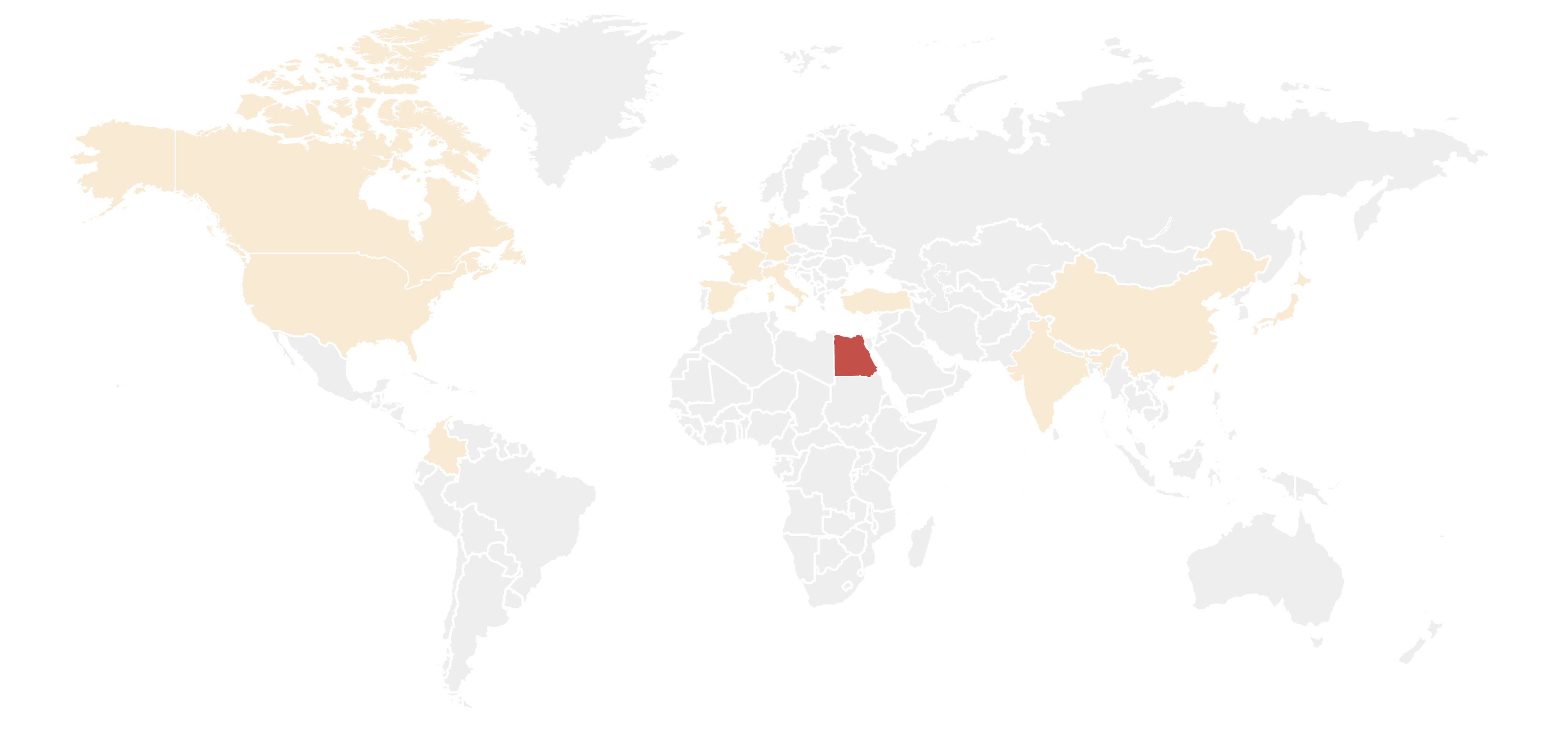
Egypt: I-WISh Survey Results
time of the survey
 What people with ITP said…
What people with ITP said…
-
 of 10 experience fatigue
of 10 experience fatigue
-
 of 10 experience anxiety about their
platelet count being unstable
of 10 experience anxiety about their
platelet count being unstable
-
 of 10 experience dizziness
of 10 experience dizziness
 What doctors said…
What doctors said…
-
 of 10 said their patients experience
gum bleeding
of 10 said their patients experience
gum bleeding
-
 of 10 said their patients experience
purpura (bruising caused by bleeding
from small blood vessels under the skin)
of 10 said their patients experience
purpura (bruising caused by bleeding
from small blood vessels under the skin)
-
 of 10 said their patients experience
fatigue
of 10 said their patients experience
fatigue
 The symptoms people with ITP most want to go away
The symptoms people with ITP most want to go away
-
 of 10 said fatigue
of 10 said fatigue
-
 of 10 said heavy bleeding from the gums
of 10 said heavy bleeding from the gums
-
 of 10 said dizziness
of 10 said dizziness
daily life
-
 of 10 said their energy levels
of 10 said their energy levels
-
 of 10 said their social life
of 10 said their social life
-
 of 10 said their ability to support people
of 10 said their ability to support people
-
 of 10 said their ability to take on daily tasks
of 10 said their ability to take on daily tasks
- #1: I worry that my platelet count fluctuates for no apparent reason
- #2: I worry about having a stable and safe platelet count
- #3: I am stressed about my ITP condition
- #4: I often feel anxious/nervous about my platelet counts
 What people with ITP said their goals are…
What people with ITP said their goals are…
-
 of 10 said increasing their energy
levels
of 10 said increasing their energy
levels
-
 of 10 said reducing spontaneous
bleeds/bruising
of 10 said reducing spontaneous
bleeds/bruising
-
 of 10 said improving their quality of
life
of 10 said improving their quality of
life
 What doctors said their goals are…
What doctors said their goals are…
-
 of 10 said reducing spontaneous
bleeds
of 10 said reducing spontaneous
bleeds
-
 of 10 said a better quality of life
of 10 said a better quality of life
-
 of 10 said slowing or delaying the
progression of ITP
of 10 said slowing or delaying the
progression of ITP
 What people with ITP said…
What people with ITP said…
-
 of 10 said they prefer an oral once-daily
pill
of 10 said they prefer an oral once-daily
pill
 What doctors said…
What doctors said…
-
 of 10 said they prefer an oral
once-daily pill
of 10 said they prefer an oral
once-daily pill
- Keep side effects to a minimum: 73
- Reduce bleeding: 92

France: I-WISh Survey Results
time of the survey
 What people with ITP said…
What people with ITP said…
-
 of 10 experience fatigue
of 10 experience fatigue
-
 of 10 experience no symptoms
of 10 experience no symptoms
-
 of 10 experience anxiety about their
platelet count being unstable
of 10 experience anxiety about their
platelet count being unstable
 What doctors said…
What doctors said…
-
 of 10 said their patients experience
purpura (bruising caused by bleeding
from small blood vessels under the skin)
of 10 said their patients experience
purpura (bruising caused by bleeding
from small blood vessels under the skin)
-
 of 10 said their patients experience
petechiae (tiny red/purple dots on the
skin)
of 10 said their patients experience
petechiae (tiny red/purple dots on the
skin)
-
 of 10 said their patients experience
gum bleeding
of 10 said their patients experience
gum bleeding
 The symptoms people with ITP most want to go away
The symptoms people with ITP most want to go away
-
 of 10 said fatigue
of 10 said fatigue
-
 of 10 said anxiety about their platelet count being unstable
of 10 said anxiety about their platelet count being unstable
-
 of 10 said heavy menstrual bleeding
of 10 said heavy menstrual bleeding
daily life
-
 of 10 said their energy levels
of 10 said their energy levels
-
 of 10 said their work life or their studies
of 10 said their work life or their studies
-
 of 10 said their ability to exercise
of 10 said their ability to exercise
- #1: I worry that my platelet count fluctuates for no apparent reason
- #2: I worry that my condition will get worse
- #3: I worry about my disease
- #4: I worry about dying
 What people with ITP said their goals are…
What people with ITP said their goals are…
-
 of 10 said healthy blood counts
of 10 said healthy blood counts
-
 of 10 said preventing their ITP from
becoming worse
of 10 said preventing their ITP from
becoming worse
-
 of 10 said improving their quality of
life
of 10 said improving their quality of
life
 What doctors said their goals are…
What doctors said their goals are…
-
 of 10 said reducing spontaneous
bleeds
of 10 said reducing spontaneous
bleeds
-
 of 10 said a better quality of life
of 10 said a better quality of life
-
 of 10 said symptom improvement
of 10 said symptom improvement
 What people with ITP said…
What people with ITP said…
-
 of 10 said they prefer an oral once-daily
pill
of 10 said they prefer an oral once-daily
pill
 What doctors said…
What doctors said…
-
 of 10 said they prefer an oral
once-daily pill
of 10 said they prefer an oral
once-daily pill
- Keep side effects to a minimum: 90
- Reduce bleeding: 91
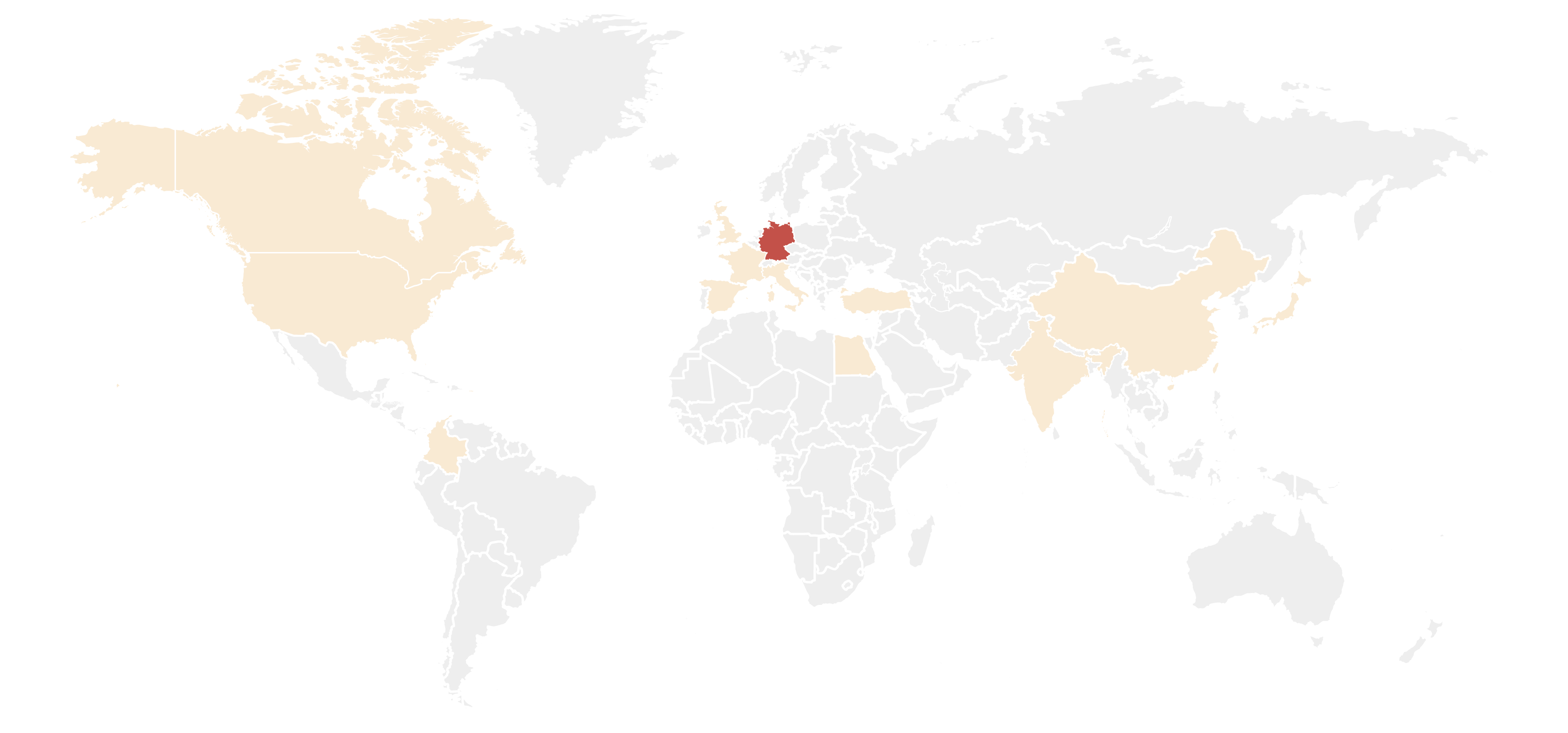
Germany: I-WISh Survey Results
time of the survey
 What people with ITP said…
What people with ITP said…
-
 of 10 experience hematomas
of 10 experience hematomas
-
 of 10 experience fatigue
of 10 experience fatigue
-
 of 10 experience bruising for no
known reason
of 10 experience bruising for no
known reason
 What doctors said…
What doctors said…
-
 of 10 said their patients experience
nosebleeds
of 10 said their patients experience
nosebleeds
-
 of 10 said their patients experience
hematomas
of 10 said their patients experience
hematomas
-
 of 10 said their patients experience
prolonged bleeding from cuts
of 10 said their patients experience
prolonged bleeding from cuts
 The symptoms people with ITP most want to go away
The symptoms people with ITP most want to go away
-
 of 10 said fatigue or hematomas
of 10 said fatigue or hematomas
-
 of 10 said anxiety about their platelet count being unstable
of 10 said anxiety about their platelet count being unstable
-
 of 10 said prolonged bleeding from cuts
of 10 said prolonged bleeding from cuts
daily life
-
 of 10 said their ability to exercise
of 10 said their ability to exercise
-
 of 10 said their energy levels
of 10 said their energy levels
-
 of 10 said their sex life
of 10 said their sex life
- #1: I worry that my condition will get worse
- #2: I worry that my platelet count fluctuates for no apparent reason
- #3: I worry about my disease
 What people with ITP said their goals are…
What people with ITP said their goals are…
-
 of 10 said healthy blood counts
of 10 said healthy blood counts
-
 of 10 said improving their quality of
life
of 10 said improving their quality of
life
-
 of 10 said increasing their energy
levels
of 10 said increasing their energy
levels
 What doctors said their goals are…
What doctors said their goals are…
-
 of 10 said better quality of life
of 10 said better quality of life
-
 of 10 said reducing spontaneous
bleeds
of 10 said reducing spontaneous
bleeds
-
 of 10 said healthy blood counts
of 10 said healthy blood counts
 What people with ITP said…
What people with ITP said…
-
 of 10 said they prefer an oral once-daily
pill
of 10 said they prefer an oral once-daily
pill
 What doctors said…
What doctors said…
-
 of 10 said they prefer an oral
once-daily pill
of 10 said they prefer an oral
once-daily pill
- Keep side effects to a minimum: 76
- Reduce bleeding: 77
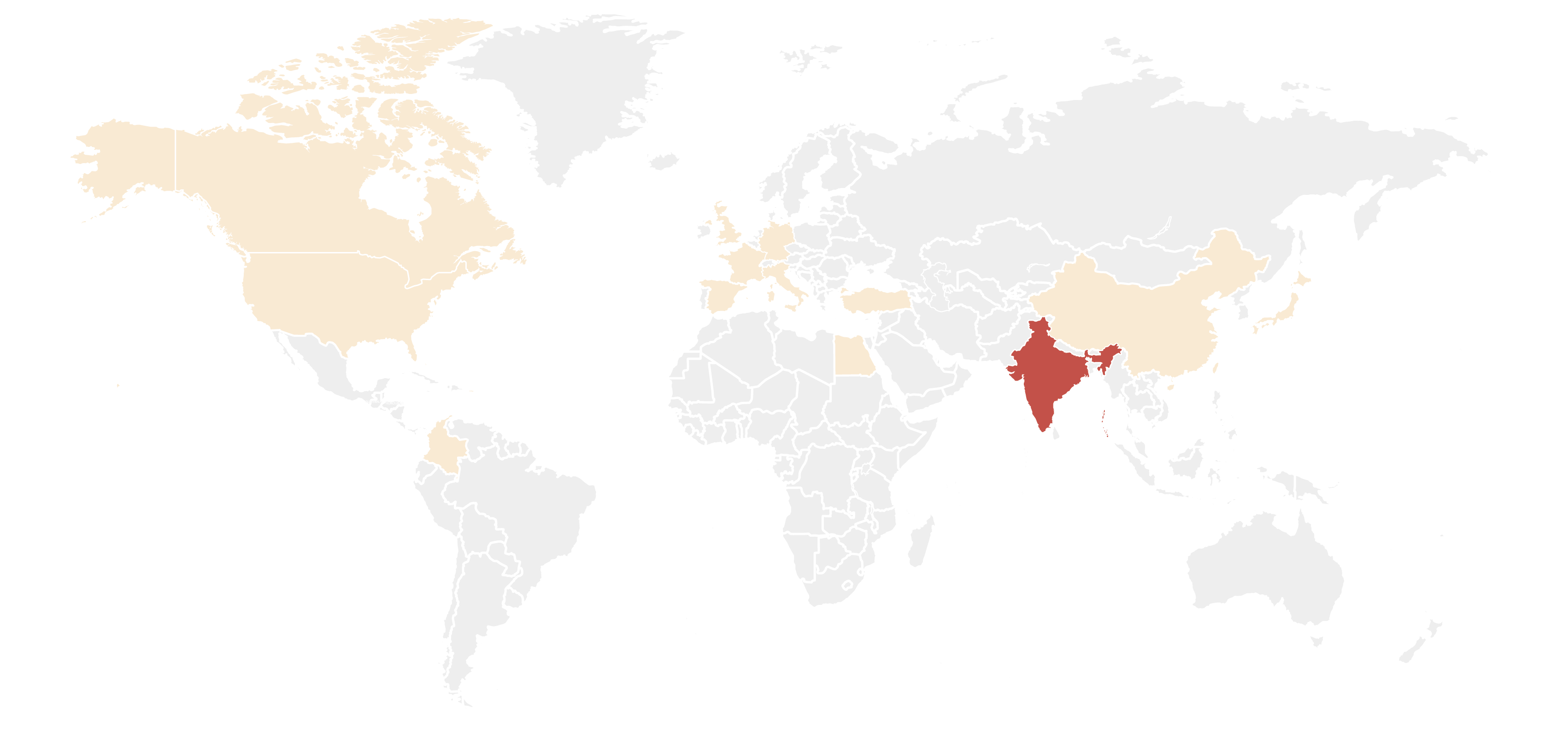
India: I-WISh Survey Results
time of the survey
 What people with ITP said…
What people with ITP said…
-
 of 10 experience fatigue
of 10 experience fatigue
-
 of 10 experience heavy menstrual
bleeding
of 10 experience heavy menstrual
bleeding
-
 of 10 experience anxiety about their
platelet count being unstable
of 10 experience anxiety about their
platelet count being unstable
 What doctors said…
What doctors said…
-
 of 10 said their patients experience
petechiae (tiny red/purple dots on the
skin)
of 10 said their patients experience
petechiae (tiny red/purple dots on the
skin)
-
 of 10 said their patients experience
purpura (bruising caused by bleeding
from small blood vessels under the skin)
of 10 said their patients experience
purpura (bruising caused by bleeding
from small blood vessels under the skin)
-
 of 10 said their patients experience
gum bleeding
of 10 said their patients experience
gum bleeding
 The symptoms people with ITP most want to go away
The symptoms people with ITP most want to go away
-
 of 10 said fatigue
of 10 said fatigue
-
 of 10 said heavy menstrual bleeding
of 10 said heavy menstrual bleeding
-
 of 10 said anxiety about their platelet count being unstable
of 10 said anxiety about their platelet count being unstable
daily life
-
 of 10 said their work life or their studies
of 10 said their work life or their studies
-
 of 10 said their time off work or their education
of 10 said their time off work or their education
-
 of 10 said their energy levels
of 10 said their energy levels
- #1: I often feel anxious/nervous about my platelet counts
- #1: I worry about having a stable and safe platelet count
- #2: I worry that my platelet count fluctuates for no apparent reason
 What people with ITP said their goals are…
What people with ITP said their goals are…
-
 of 10 said healthy blood counts
of 10 said healthy blood counts
-
 of 10 said improving their quality of
life
of 10 said improving their quality of
life
-
 of 10 said preventing their ITP from
becoming worse
of 10 said preventing their ITP from
becoming worse
 What doctors said their goals are…
What doctors said their goals are…
-
 of 10 said reducing spontaneous
bleeds
of 10 said reducing spontaneous
bleeds
-
 of 10 said a better quality of life
of 10 said a better quality of life
-
 of 10 said symptom improvement
of 10 said symptom improvement
 What people with ITP said…
What people with ITP said…
-
 of 10 said they prefer an oral once-daily
pill
of 10 said they prefer an oral once-daily
pill
 What doctors said…
What doctors said…
-
 of 10 said they prefer an oral
once-daily pill
of 10 said they prefer an oral
once-daily pill
- Keep side effects to a minimum: 83
- Reduce bleeding: 76

Italy: I-WISh Survey Results
time of the survey
 What people with ITP said…
What people with ITP said…
-
 of 10 experience fatigue
of 10 experience fatigue
-
 of 10 experience anxiety about their
platelet count being unstable
of 10 experience anxiety about their
platelet count being unstable
-
 of 10 experience bruising for no
known reason
of 10 experience bruising for no
known reason
 What doctors said…
What doctors said…
-
 of 10 said their patients experience
petechiae (tiny red/purple dots on the
skin)
of 10 said their patients experience
petechiae (tiny red/purple dots on the
skin)
-
 of 10 said their patients experience
hematomas
of 10 said their patients experience
hematomas
-
 of 10 said their patients experience
nosebleeds
of 10 said their patients experience
nosebleeds
 The symptoms people with ITP most want to go away
The symptoms people with ITP most want to go away
-
 of 10 said fatigue
of 10 said fatigue
-
 of 10 said anxiety about their platelet count being unstable
of 10 said anxiety about their platelet count being unstable
-
 of 10 said bruising for no known reason
of 10 said bruising for no known reason
daily life
-
 of 10 said their ability to exercise
of 10 said their ability to exercise
-
 of 10 said their energy levels
of 10 said their energy levels
-
 of 10 said their hobbies
of 10 said their hobbies
- #1: I worry that my platelet count fluctuates for no apparent reason
- #2: I worry that my condition will get worse
- #3: I feel helpless because of my ITP
 What people with ITP said their goals are…
What people with ITP said their goals are…
-
 of 10 said reducing spontaneous
bleeds/bruising
of 10 said reducing spontaneous
bleeds/bruising
-
 of 10 said healthy blood counts
of 10 said healthy blood counts
-
 of 10 said preventing their ITP from
becoming worse
of 10 said preventing their ITP from
becoming worse
 What doctors said their goals are…
What doctors said their goals are…
-
 of 10 said better quality of life
of 10 said better quality of life
-
 of 10 said reducing spontaneous
bleeds
of 10 said reducing spontaneous
bleeds
-
 of 10 said symptom improvement
of 10 said symptom improvement
 What people with ITP said…
What people with ITP said…
-
 of 10 said they prefer an oral once-daily
pill
of 10 said they prefer an oral once-daily
pill
 What doctors said…
What doctors said…
-
 of 10 said they prefer an oral
once-daily pill
of 10 said they prefer an oral
once-daily pill
- Keep side effects to a minimum: 88
- Reduce bleeding: 88
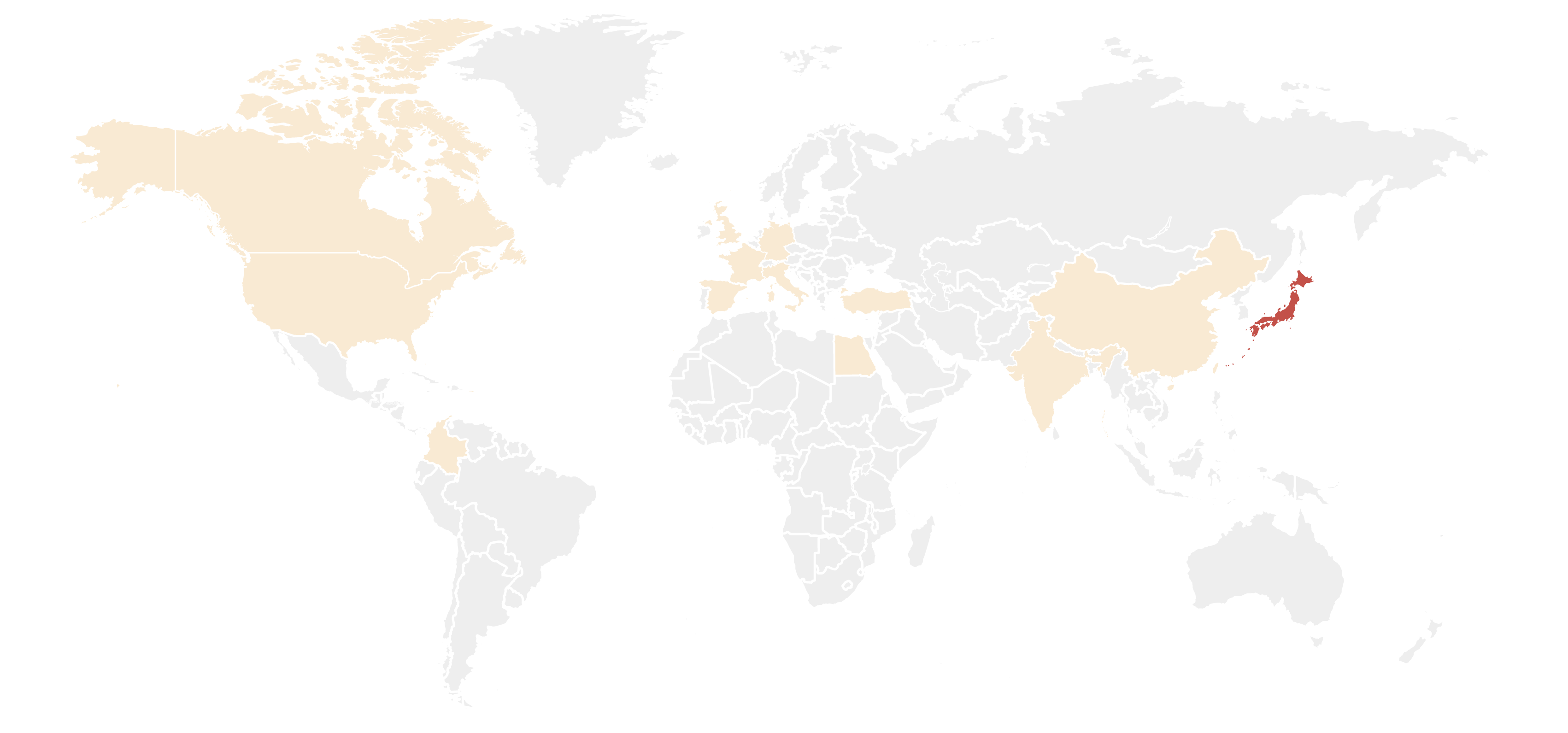
Japan: I-WISh Survey Results
time of the survey
 What people with ITP said…
What people with ITP said…
-
 of 10 experience anxiety about their
platelet count being unstable
of 10 experience anxiety about their
platelet count being unstable
-
 of 10 experience no symptoms
of 10 experience no symptoms
-
 of 10 experience petechiae (tiny
red/purple dots on the skin)
of 10 experience petechiae (tiny
red/purple dots on the skin)
 What doctors said…
What doctors said…
-
 of 10 said their patients experience
petechiae (tiny red/purple dots on the
skin)
of 10 said their patients experience
petechiae (tiny red/purple dots on the
skin)
-
 of 10 said their patients experience
purpura (bruising caused by bleeding
from small blood vessels under the skin)
of 10 said their patients experience
purpura (bruising caused by bleeding
from small blood vessels under the skin)
-
 of 10 said their patients experience
nosebleeds
of 10 said their patients experience
nosebleeds
 The symptoms people with ITP most want to go away
The symptoms people with ITP most want to go away
-
 of 10 said anxiety about their platelet count being unstable
of 10 said anxiety about their platelet count being unstable
-
 of 10 said petechiae (tiny red/purple dots on the skin)
of 10 said petechiae (tiny red/purple dots on the skin)
-
 of 10 said bruising for no known reason
of 10 said bruising for no known reason
daily life
-
 of 10 said their ability to support people
of 10 said their ability to support people
-
 of 10 said their work life or their studies
of 10 said their work life or their studies
-
 of 10 said their energy levels or their social life
of 10 said their energy levels or their social life
- #1: I worry that my platelet count fluctuates for no apparent reason
- #2: I worry that my condition will get worse
- #3: I worry about having a stable and safe platelet count
- #3: I often feel anxious/nervous about my platelet counts
 What people with ITP said their goals are…
What people with ITP said their goals are…
-
 of 10 said healthy blood counts
of 10 said healthy blood counts
-
 of 10 said preventing their ITP from
becoming worse
of 10 said preventing their ITP from
becoming worse
-
 of 10 said reducing my spontaneous
bleeds/bruising
of 10 said reducing my spontaneous
bleeds/bruising
 What doctors said their goals are…
What doctors said their goals are…
-
 of 10 said a better quality of life
of 10 said a better quality of life
-
 of 10 said reducing spontaneous
bleeds
of 10 said reducing spontaneous
bleeds
-
 of 10 said healthy blood counts
of 10 said healthy blood counts
 What people with ITP said…
What people with ITP said…
-
 of 10 said they prefer an oral once-daily
pill
of 10 said they prefer an oral once-daily
pill
 What doctors said…
What doctors said…
-
 of 10 said they prefer an oral
once-daily pill
of 10 said they prefer an oral
once-daily pill
- Keep side effects to a minimum: 80
- Reduce bleeding: 88
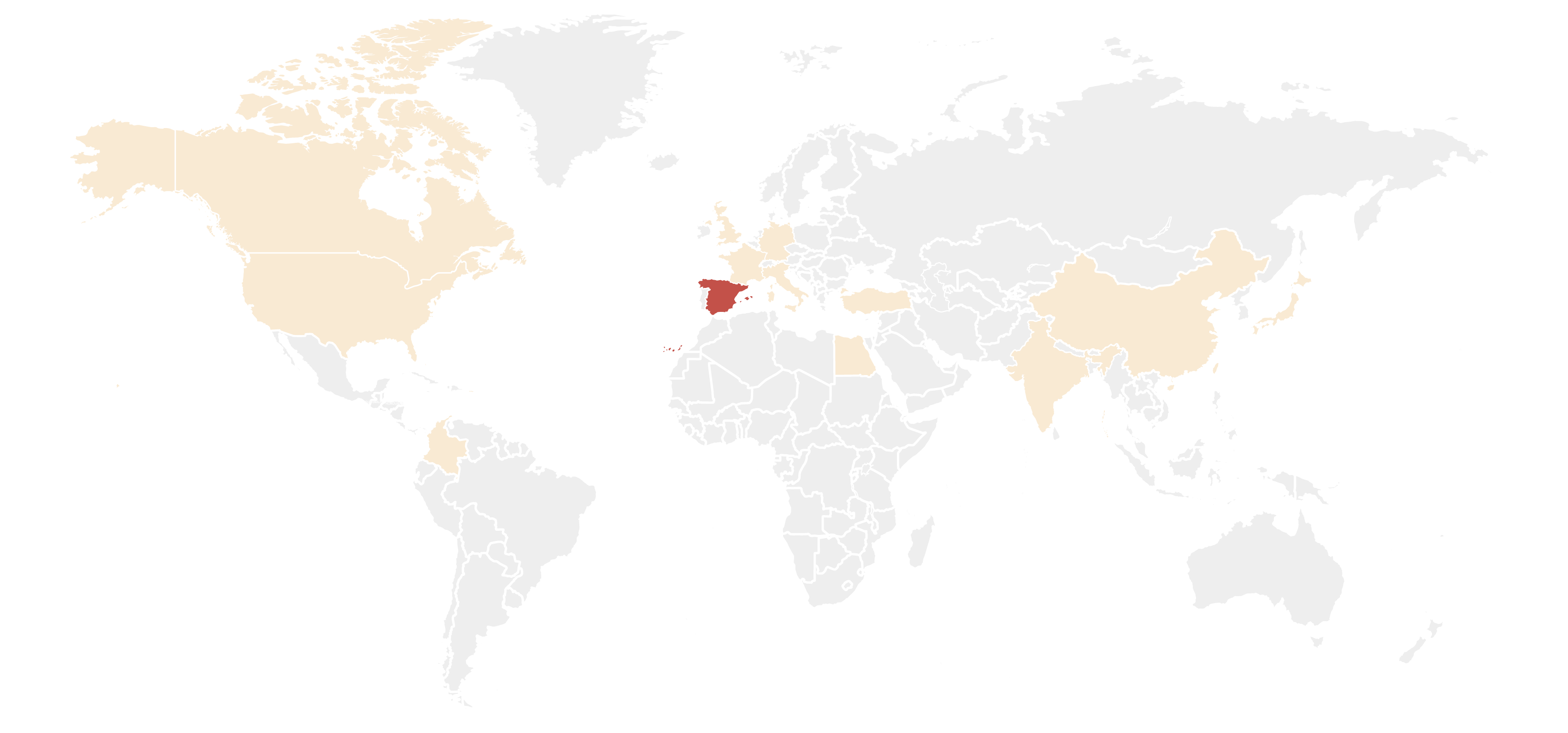
Spain: I-WISh Survey Results
time of the survey
 What people with ITP said…
What people with ITP said…
-
 of 10 experience anxiety about their
platelet count being unstable
of 10 experience anxiety about their
platelet count being unstable
-
 of 10 experience fatigue
of 10 experience fatigue
-
 of 10 experience petechiae (tiny
red/purple dots on the skin)
of 10 experience petechiae (tiny
red/purple dots on the skin)
 What doctors said…
What doctors said…
-
 of 10 said their patients experience
petechiae (tiny red/purple dots on the
skin)
of 10 said their patients experience
petechiae (tiny red/purple dots on the
skin)
-
 of 10 said their patients experience
hematomas
of 10 said their patients experience
hematomas
-
 of 10 said their patients experience
gum bleeding
of 10 said their patients experience
gum bleeding
 The symptoms people with ITP most want to go away
The symptoms people with ITP most want to go away
-
 of 10 said anxiety about their platelet count being unstable
of 10 said anxiety about their platelet count being unstable
-
 of 10 said fatigue
of 10 said fatigue
-
 of 10 said bruising for no known reason or petechiae (tiny red/purple dots on the skin)
of 10 said bruising for no known reason or petechiae (tiny red/purple dots on the skin)
daily life
-
 of 10 said their energy levels
of 10 said their energy levels
-
 of 10 said their social life
of 10 said their social life
-
 of 10 said their sex life
of 10 said their sex life
- #1: I worry that my platelet count fluctuates for no apparent reason
- #2: I worry that my condition will get worse
- #3: I feel helpless because of my ITP
 What people with ITP said their goals are…
What people with ITP said their goals are…
-
 of 10 said reducing spontaneous
bleeds/bruising
of 10 said reducing spontaneous
bleeds/bruising
-
 of 10 said preventing their ITP from
becoming worse
of 10 said preventing their ITP from
becoming worse
-
 of 10 said improving their quality of
life
of 10 said improving their quality of
life
 What doctors said their goals are…
What doctors said their goals are…
-
 of 10 said a better quality of life
of 10 said a better quality of life
-
 of 10 said reducing spontaneous
bleeds
of 10 said reducing spontaneous
bleeds
-
 of 10 said symptom improvement
of 10 said symptom improvement
 What people with ITP said…
What people with ITP said…
-
 of 10 said they prefer an oral once-daily
pill
of 10 said they prefer an oral once-daily
pill
 What doctors said…
What doctors said…
-
 of 10 said they prefer an oral
once-daily pill
of 10 said they prefer an oral
once-daily pill
- Keep side effects to a minimum: 77
- Reduce bleeding: 81
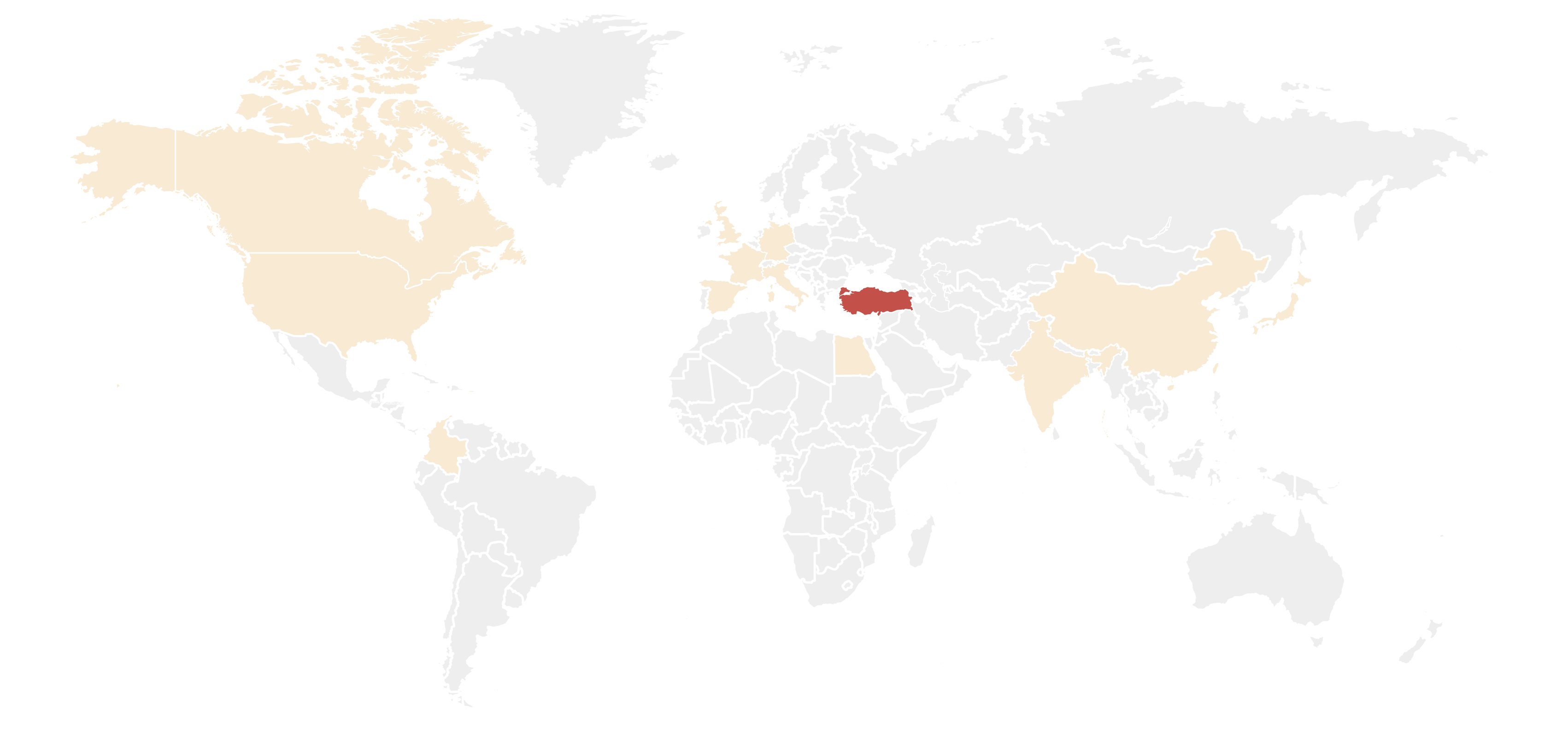
Turkey: I-WISh Survey Results
time of the survey
 What people with ITP said…
What people with ITP said…
-
 of 10 experience petechiae (tiny
red/purple dots on the skin)
of 10 experience petechiae (tiny
red/purple dots on the skin)
-
 of 10 experience fatigue
of 10 experience fatigue
-
 of 10 experience more moderate-to-severe headaches or migraines
of 10 experience more moderate-to-severe headaches or migraines
 What doctors said…
What doctors said…
-
 of 10 said their patients experience
petechiae (tiny red/purple dots on the
skin)
of 10 said their patients experience
petechiae (tiny red/purple dots on the
skin)
-
 of 10 said their patients experience
fatigue
of 10 said their patients experience
fatigue
-
 of 10 said their patients experience
gum bleeding
of 10 said their patients experience
gum bleeding
 The symptoms people with ITP most want to go away
The symptoms people with ITP most want to go away
-
 of 10 said petechiae (tiny red/purple dots on the skin)
of 10 said petechiae (tiny red/purple dots on the skin)
-
 of 10 said fatigue
of 10 said fatigue
-
 of 10 said moderate-to-severe headaches or migraines
of 10 said moderate-to-severe headaches or migraines
daily life
-
 of 10 said their sex life
of 10 said their sex life
-
 of 10 said their ability to exercise
of 10 said their ability to exercise
-
 of 10 said their hobbies
of 10 said their hobbies
- #1: I worry that my platelet count fluctuates for no apparent reason
- #2: I worry about my disease
- #3: I worry that my condition will get worse
- #3: I am stressed about my ITP condition
- #3: I worry about dying
 What people with ITP said their goals are…
What people with ITP said their goals are…
-
 of 10 said healthy blood counts
of 10 said healthy blood counts
-
 of 10 said improving their quality of
life
of 10 said improving their quality of
life
-
 of 10 said reducing spontaneous
bleeds/bruising
of 10 said reducing spontaneous
bleeds/bruising
 What doctors said their goals are…
What doctors said their goals are…
-
 of 10 said reducing spontaneous
bleeds
of 10 said reducing spontaneous
bleeds
-
 of 10 said healthy blood counts
of 10 said healthy blood counts
-
 of 10 said slowing or delaying the
progression of ITP
of 10 said slowing or delaying the
progression of ITP
 What people with ITP said…
What people with ITP said…
-
 of 10 said they prefer an oral once-daily
pill
of 10 said they prefer an oral once-daily
pill
 What doctors said…
What doctors said…
-
 of 10 said they prefer an oral
once-daily pill
of 10 said they prefer an oral
once-daily pill
- Keep side effects to a minimum: 99
- Reduce bleeding: 99

United Kingdom: I-WISh Survey Results
time of the survey
 What people with ITP said…
What people with ITP said…
-
 of 10 experience fatigue
of 10 experience fatigue
-
 of 10 experience bruising for no
known reason
of 10 experience bruising for no
known reason
-
 of 10 experience petechiae (tiny
red/purple dots on the skin)
of 10 experience petechiae (tiny
red/purple dots on the skin)
 What doctors said…
What doctors said…
-
 of 10 said their patients experience
purpura (bruising caused by bleeding
from small blood vessels under the skin)
of 10 said their patients experience
purpura (bruising caused by bleeding
from small blood vessels under the skin)
-
 of 10 said their patients experience
nosebleeds
of 10 said their patients experience
nosebleeds
-
 of 10 said their patients experience
petechiae (tiny red/purple dots on the
skin)
of 10 said their patients experience
petechiae (tiny red/purple dots on the
skin)
 The symptoms people with ITP most want to go away
The symptoms people with ITP most want to go away
-
 of 10 said fatigue
of 10 said fatigue
-
 of 10 said bruising for no known reason
of 10 said bruising for no known reason
-
 of 10 said depression
of 10 said depression
daily life
-
 of 10 said their energy levels
of 10 said their energy levels
-
 of 10 said their ability to exercise
of 10 said their ability to exercise
-
 of 10 said their ability to take on daily tasks
of 10 said their ability to take on daily tasks
- #1: I worry that my condition will get worse
- #2: I worry that my platelet count fluctuates for no apparent reason
- #3: I worry about my disease
 What people with ITP said their goals are…
What people with ITP said their goals are…
-
 of 10 said healthy blood counts
of 10 said healthy blood counts
-
 of 10 said increasing their energy
levels
of 10 said increasing their energy
levels
-
 of 10 said preventing their ITP from
becoming worse
of 10 said preventing their ITP from
becoming worse
 What doctors said their goals are…
What doctors said their goals are…
-
 of 10 said reducing spontaneous
bleeds
of 10 said reducing spontaneous
bleeds
-
 of 10 said a better quality of life
of 10 said a better quality of life
-
 of 10 said symptom improvement
of 10 said symptom improvement
 What people with ITP said…
What people with ITP said…
-
 of 10 said they prefer an oral once-daily
pill
of 10 said they prefer an oral once-daily
pill
 What doctors said…
What doctors said…
-
 of 10 said they prefer an oral
once-daily pill
of 10 said they prefer an oral
once-daily pill
- Keep side effects to a minimum: 86
- Reduce bleeding: 86

United States: I-WISh Survey Results
time of the survey
 What people with ITP said…
What people with ITP said…
-
 of 10 experience fatigue
of 10 experience fatigue
-
 of 10 experience anxiety about their
platelet count being unstable
of 10 experience anxiety about their
platelet count being unstable
-
 of 10 experience bruising for no
known reason
of 10 experience bruising for no
known reason
 What doctors said…
What doctors said…
-
 of 10 said their patients experience
petechiae (tiny red/purple dots on the
skin)
of 10 said their patients experience
petechiae (tiny red/purple dots on the
skin)
-
 of 10 said their patients experience
purpura (bruising caused by bleeding
from small blood vessels under the skin)
of 10 said their patients experience
purpura (bruising caused by bleeding
from small blood vessels under the skin)
-
 of 10 said their patients experience
nosebleeds
of 10 said their patients experience
nosebleeds
 The symptoms people with ITP most want to go away
The symptoms people with ITP most want to go away
-
 of 10 said fatigue
of 10 said fatigue
-
 of 10 said anxiety about their platelet count being unstable
of 10 said anxiety about their platelet count being unstable
-
 of 10 said bruising for no known reason
of 10 said bruising for no known reason
daily life
-
 of 10 said their energy levels
of 10 said their energy levels
-
 of 10 said their ability to exercise
of 10 said their ability to exercise
-
 of 10 said their work life or their studies
of 10 said their work life or their studies
- #1: I worry that my condition will get worse
- #2: I worry that my platelet count fluctuates for no apparent reason
- #3: I feel frustrated by having to put up with symptoms
 What people with ITP said their goals are…
What people with ITP said their goals are…
-
 of 10 said healthy blood counts
of 10 said healthy blood counts
-
 of 10 said increasing their energy
levels
of 10 said increasing their energy
levels
-
 of 10 said preventing their ITP from
becoming worse
of 10 said preventing their ITP from
becoming worse
 What doctors said their goals are…
What doctors said their goals are…
-
 of 10 said healthy blood counts
of 10 said healthy blood counts
-
 of 10 said reducing spontaneous
bleeds
of 10 said reducing spontaneous
bleeds
-
 of 10 said a better quality of life
of 10 said a better quality of life
 What people with ITP said…
What people with ITP said…
-
 of 10 said they prefer an oral once-daily
pill
of 10 said they prefer an oral once-daily
pill
 What doctors said…
What doctors said…
-
 of 10 said they prefer an oral
once-daily pill
of 10 said they prefer an oral
once-daily pill
- Keep side effects to a minimum: 85
- Reduce bleeding: 88
